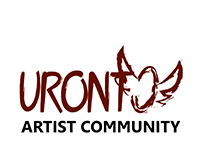
22 Apr “পোড়ামাটির কথা | Terracotta Narratives” – Virtual Exhibition by OSCH youth board, Rajshahi

“Terracotta Narrative” is a virtual exhibition with photographs of Terracotta from Puthia in Rajshahi Division. The exhibition reveals mythological and social narratives curved in the ancient terracotta in the walls of Puthia. The exhibition contains 40 images of Terracotta from Puthia Rajbari along with small narratives about the terracotta. The photographs are taken by the research team under the youth board of OSCH project and the exhibition is facilitated by EMK Center at their virtual platform. Exhibition will be open online for all from 23 April to 31 May 2022, the digital catalogue will be available online here and on EMK website always.
View the exhibition : https://emkcenter.org/exhibition/terracotta-narratives/
It is a join collaboration of EMK center and OSCH-Rajshahi with partnership of URONTO Artist Community in OSCH.
Our Shared Cultural Heritage (OSCH) was launched to explore the connection between Bangladesh and the UK through exploring different heritages. This project aims to connect the youth to museums, history and heritages through various programs and training activities. As the participants of this project, thirty young people will contribute to the spread the shared histories by incorporating those histories and traditions to themselves. The project was initially started in Rajshahi by the British Council Bangladesh in support with CCD Bangladesh and Uronto Artist Community as project delivery partners, and Varandra Research Museum as the knowledge and resource partners.
Through this project, cultural heritages are being presented at local and international level with the help of different creative and modern technologies. This exhibition showcases a presentation of our traditional mythological tales and notable events in our social history.
In the exhibition, The photographs were taken by the youth board members – Minhazul Islam, Md. Shafaet Hossain, Mariom Bentee Rahman and Nabil Hassan. The terracottas depict the stories from epics such as the war of Rama and Ravana, the birth and stories of Krishna growing up, the hunting stories of the zamindars etcetera. The research team of the OSCH youth board worked on the background research and collected the information of these pictures. Dr. Kazi Mohammad Mostafizur Rahman, Professor, Islamic History and Heritage, Rajshahi University, and Sadya Mizan, Curator, worked as the advisor for these research team. The exhibition has been arranged by Uronto Artist Community, and the representatives of the youth board Minhazul Islam, Mst.Homaira Himu, Md. Shafaet Hossain, Mariom Bentee Rahman, Sarifa Islam Satu, Samsad Jahan, Iftikhar Kabir Roni and Nabil Hasan in collaboration with all youth board members under the project.

‘’The use of terracotta slab art in building ornaments is an ancient tradition of Bengal. The use of this art during the ancient Pala rule can be seen in the ornaments of the Paharpur Buddhist monastery discovered in Naogaon district through excavations. There is a precedent of using such art from the Mainamati archeological site of Comilla. Therefore, it can be said without any doubt that terracotta plaques have been in vogue in all parts of Bengal since time immemorial, which is the tradition of this country.
The subjects engraved on the fruit were various animals, beasts, reptiles, various gods and goddesses and the society of that time. The terracotta plaques of this indigenous tradition continue to be painted in the building ornaments even during the medieval sultanate rule after antiquity. The sultans used a large number of terracotta plaques in the ornaments of the mosques built as religious architecture. Needless to say, the numbness in the ancient terracotta plaques was removed during the Muslim rule and it became a masterpiece. Abstract portraits, such as twisted herbs, hanging lamps, grape designs, trees, floral designs, various geometric designs, etc., have been replaced by figurative or living symbols, and the terracotta plaque has reached the pinnacle of industrial development. But after the arrival of the Mughals, they gradually avoided the terracotta plaques as ornaments in the mosques built by them and used only plaster and cut plaster ornaments, carvings and niches. At that time, however, terracotta plaques were found in temples built under the patronage of local Hindu zamindars, and it flourished. The use of terracotta plaque is observed in the ornaments of most of the temples built during this period. And the religious texts, the mythological epics Ramayana and the various events of the Mahabharata are beautifully presented as the subject matter of the illustrations as well as an attempt is made to present a perfect reflection of the social system of that time.
An example is the terracotta plaque used in the ornaments of the Kantaji Navaratna temple in Dinajpur district. Its continuity is also noticeable in the temples of Puthia. Putraya’s Pancharatna Bara Govinda Mandir, Dochala Chhota Ahnik Mandir and Chauchala Chhota Govinda Mandir in Gatralankara with Ramayana events such as Lankakanda, Mahabharata with presentation of biography of Sri Krishna, hunting scenes of the then zamindars, sepoy-laskar, dairan, that hunting journey Images of various gods and goddesses including avatars are also presented, which catches the eye of the viewers. Therefore, the role of terracotta plaque in the building ornaments is very important as an indigenous tradition of Bengal. This medieval style continues as an indigenous tradition of Bengal. This medieval style continues as an ornament of temple architecture in many temples built during the colonial period, the best examples of which are the other Chauchala temples in Puthia. ”
– Dr. Kazi Mohammad Mostafizur Rahman
Professor of Department of Islamic History and Culture, Rajshahi University | Mentor for research on Terracotta in OSCH Project
View the exhibition : https://emkcenter.org/exhibition/terracotta-narratives/


No Comments